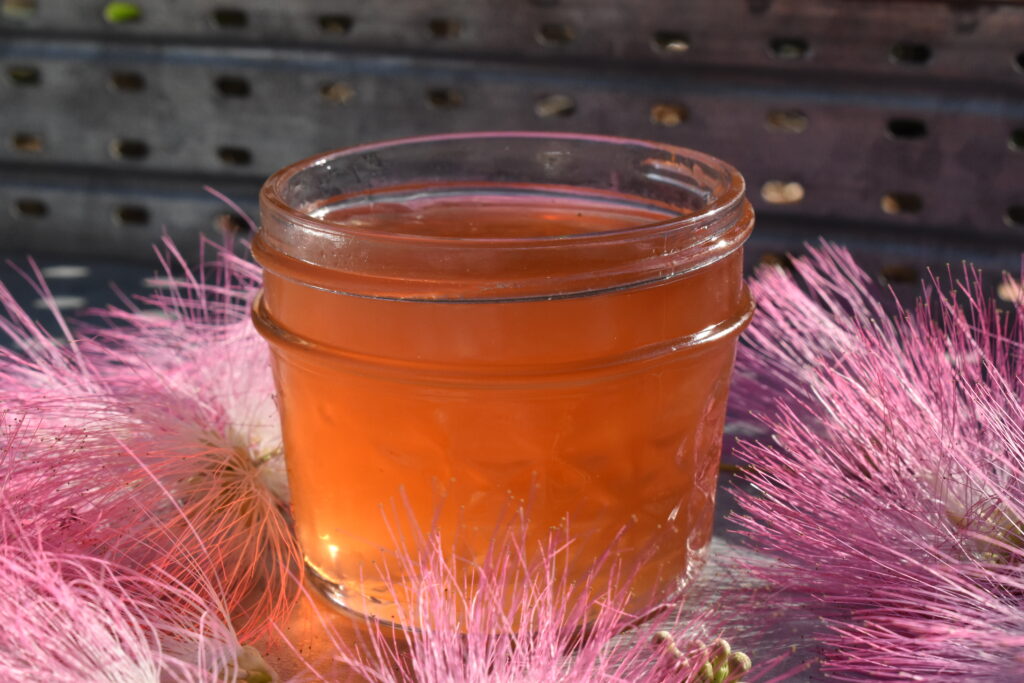
Flower jelly is an exquisite way to work with mimosa (Albizia julibrissin) to enjoy the uplifting energy and fragrance of the blooms. It’s a sublime summer foraging project.
This herb is used in TCM to support mood, immunity, and recovery from physical trauma such as fractures and bruising. The flowers and bark are both used, but bark is considered more specific for physical trauma. Both have albizia’s characteristic joyful, uplifting presence, which is what makes this flower jelly so special.
This recipe requires a few steps. Before you harvest the flowers, you need to make pectin stock from green apples. This is what gives the jelly the ability to gel.
How to Make Green Apple Pectin
I like to make my pectin the day before I make the jelly. You can also make the pectin stock ahead of time and freeze it. It will store for about six months in the freezer. You will need 3 pounds of Granny Smith apples.
Green Apple Pectin
adapted from Canning for a New Generation by Liana Krissoff
Ingredients
- 3 lbs Granny Smith apples
- 6 cups water
Tools
- cutting board
- knife
- 8 qt stock pot
- jelly bag or conical strainer
- large bowl or deep pot
- 2 quart jars
How to make it
- Wash the apples and remove the stems.
- Cut all of the apples into eighths. Leave the peels, cores, and seeds on the apple wedges.
- Place the apple wedges into an 8 qt, stainless steel stock pot.
- Add 6 cups of water to the stock pot and cover.
- Bring the water and apples to a boil and keep boiling until the peels separate from the wedges and the apples cook down to mush. Stir them occasionally to prevent anything from sticking to the bottom of the pot. (This usually takes 30-40 minutes).
- Place the jelly bag or cone strainer over a bowl or clean pot. Carefully transfer the apple peels and cooked apples into the bag or strainer and allow to drain for 30 minutes.
- This should yield around 5 cups of pectin. If needed, gently press the apple solids to express more juice. Too much pressing may squeeze out bits of apple pulp and cause your jelly to be cloudy, so do be gentle.
- Store the green apple pectin in quart jars in the refrigerator while you get ready for the next step.
Once your green apple pectin is ready, it’s time to harvest mimosa flowers!
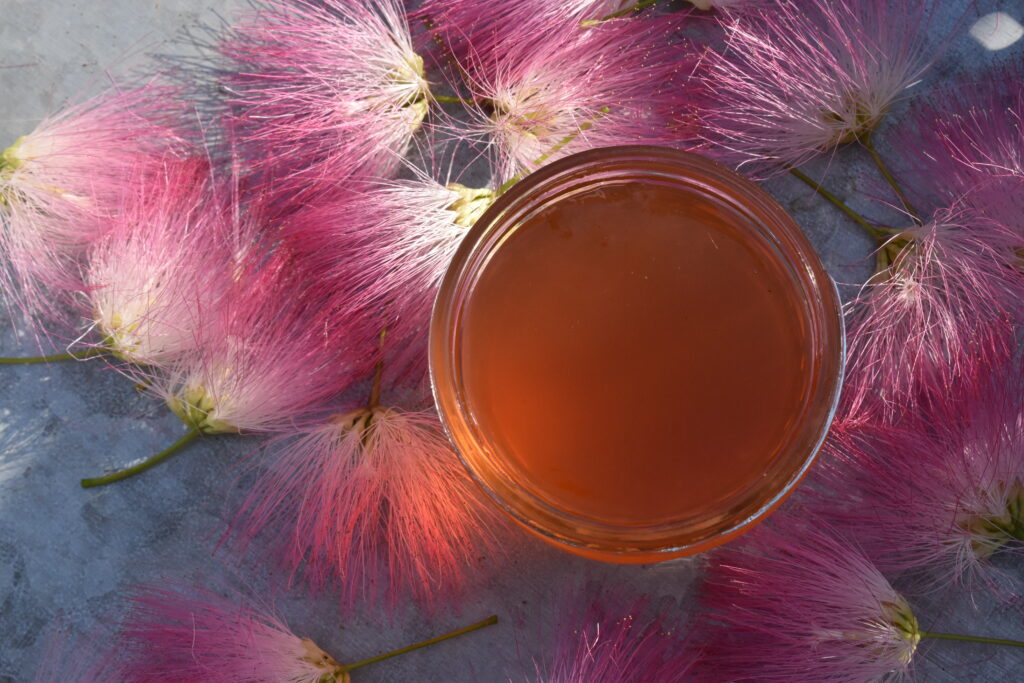
Tips for harvesting mimosa flowers
Mimosa flowers are easy to harvest by hand. The flowers have long stems that separate easily from the tree. The most difficult part is finding a tree with branches low enough to harvest, because these trees can grow quite tall.
The branches are flexible, so it’s possible to gently bend smaller limbs down to make harvesting easier. As long as you are careful this won’t hurt the tree.
Harvest on a warm, sunny day
It’s important to use the most fragrant blossoms to make mimosa flower jelly. Wait until the sun is up and the dew has dried. A nice, hot day will bring out the aroma the best, so try not to harvest on an overcast or rainy day.
For this recipe, you will need 2 1/2 cups of mimosa flowers without the long stems. I usually harvest the entire flower with the stems, and then pinch them off for the compost pile when I measure out the flowers.
Double check for best quality
Mimosa flowers are popular with bees, humminbirds, and all sorts of small caterpillars and beetles. It’s important to pick through the threads carefully before you begin making the mimosa flower jelly. Remove any wilted flowers, small insects, or bits of leaves.
Making mimosa flower jelly
I learned to make tea jelly from Canning for a New Generation by Liana Krissoff. Her tea jelly recipe is easy to adapt to many types of herbal teas. My version for mimosa flower jelly is below!
Before you begin, sterilize your jars in a water bath canning pot and keep them hot in the boiling water until the jelly is ready to pour.
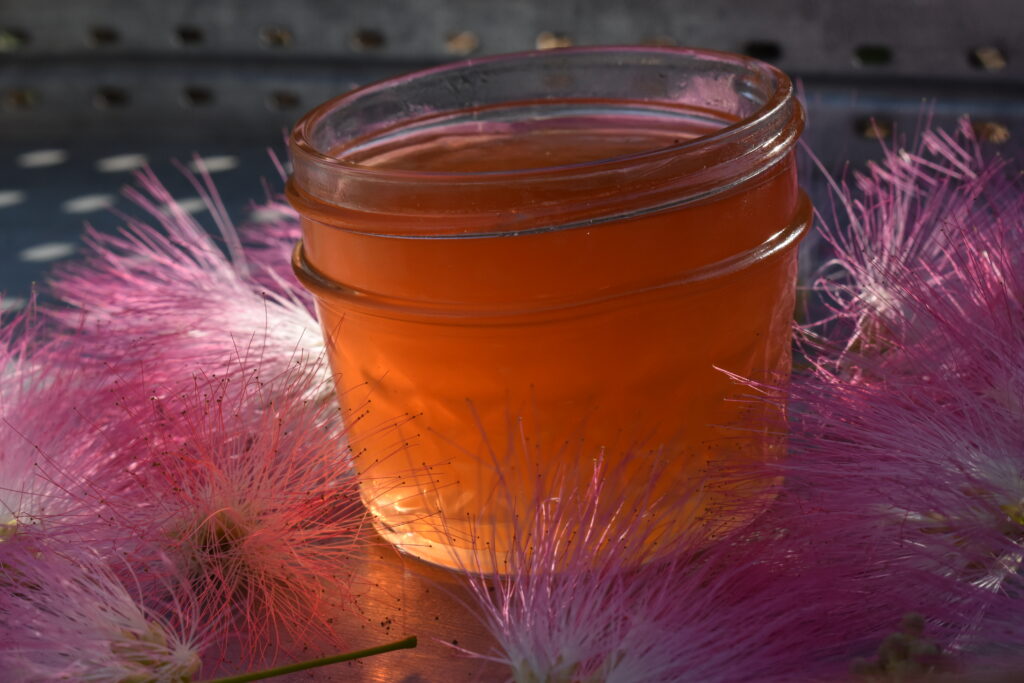
Tools
- large glass measuring cup (heat proof) or quart canning jar
- kettle to boil water
- seive to strain mimosa flower tea
- 8 qt stock pot
- wooden spoon
- candy thermometer
- ladle and canning funnel
- jar tongs
- water bath canning pot
Ingredients
- 2 cups boiling water
- 2 1/2 cups mimosa flowers
- 3 cups green apple pectin
- 1/4 cup fresh lemon juice
- 3 1/4 cup sugar
Yield
approximately 8 jars (4oz jelly jars)
How to make it
- Place the albizia flowers into a large, heatproof glass measuring cup or quart canning jar. Pour in the boiling water, cover, and allow to steep for 20 minutes.
- Strain the albizia flowers from the tea and pour the tea into an 8 qt stock pot.
- Add the green apple pectin, sugar, and lemon juice to the tea.
- Bring everything to a boil. Stirring occasionally, cook until the mixture reaches 220F when checked with a candy thermometer. This can take 30-40 minutes. To get an accurate reading, be careful not to touch the bottom of the pot!
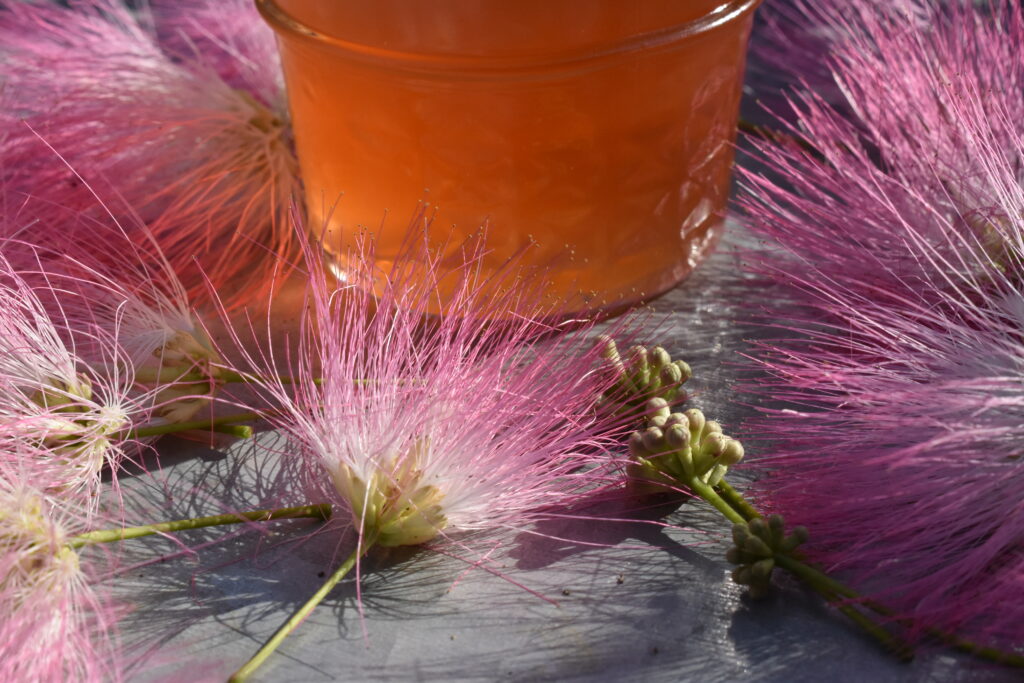
Processing the jelly
- When the jelly has reached the right temperature, remove the sterilized jars from the canning pot with the jar tongs. Place the hot jars on a towels to be filled.
- Use the ladle and canning funnel to fill the jars, leaving 1/4 inch headspace.
- Place a flat lid and canning ring on each jar, adjusting the ring to be finger tight.
- Use the jar tongs and place the jelly back into the boiling water bath. The water should cover the jars by at least one inch.
- Bring the water back to a boil and boil for 5 minutes to process.
Allow the mimosa flower jelly to set
- After the jelly has processed for five minutes, remove the jars with the tongs and place them on a towel in a spot where they will be out of the way.
- After one hour, check if the seals have set. Any jars that haven’t sealed should be refrigerated.
- Leave the sealed jars for 12 hours so the jelly can set.
- Remember to refrigerate after opening.
Enjoy your mimosa flower jelly
Breakfast is my favorite time of day to enjoy mimosa flower jelly, because I can’t think of a breakfast food that doesn’t pair well with mimosa’s fruit and floral goodness. Oatmeal, pancakes, muffins, toast – even plain yogurt would be a great option to dress up with mimosa flower jelly.
However, I think it would also be a lovely topping or filling for cakes or cookies as a dessert. It’s a bit more fruity than floral, but definitely has peach, raspberry, and rose notes that will be familiar if you’ve worked with mimosa before.
I’m even planning to try it out as a fancy grilled cheese ingredient, so don’t discount lunch or dinner options, either.
More mimosa recipes for patrons
Thanks for supporting my work! This recipe is part of an upcoming Teacup Alchemy Guide about mimosa. Patrons will be able to read it here on the blog for free.
You’ll also be able to find links to more mimosa recipes here as they become available.
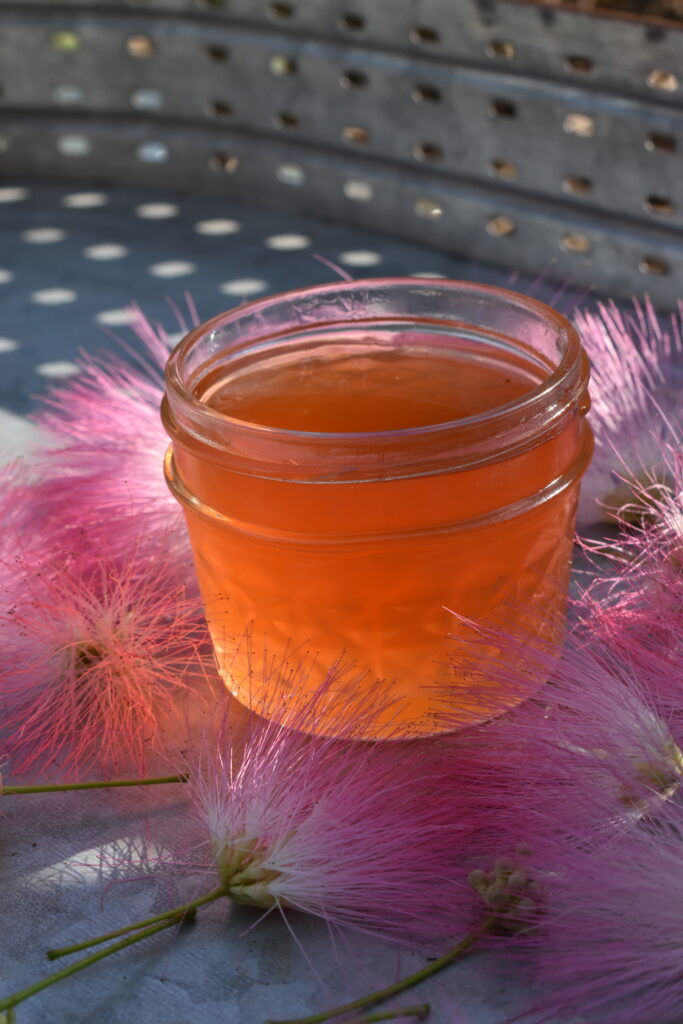
A freelance writer and herbalist since 2011, Agatha is dedicated to creating an online reader and listener supported platform supporting her work as an herbalist. Her focus in herbalism includes sustainable agriculture, community wellness and accessibility, and botanical conservation.
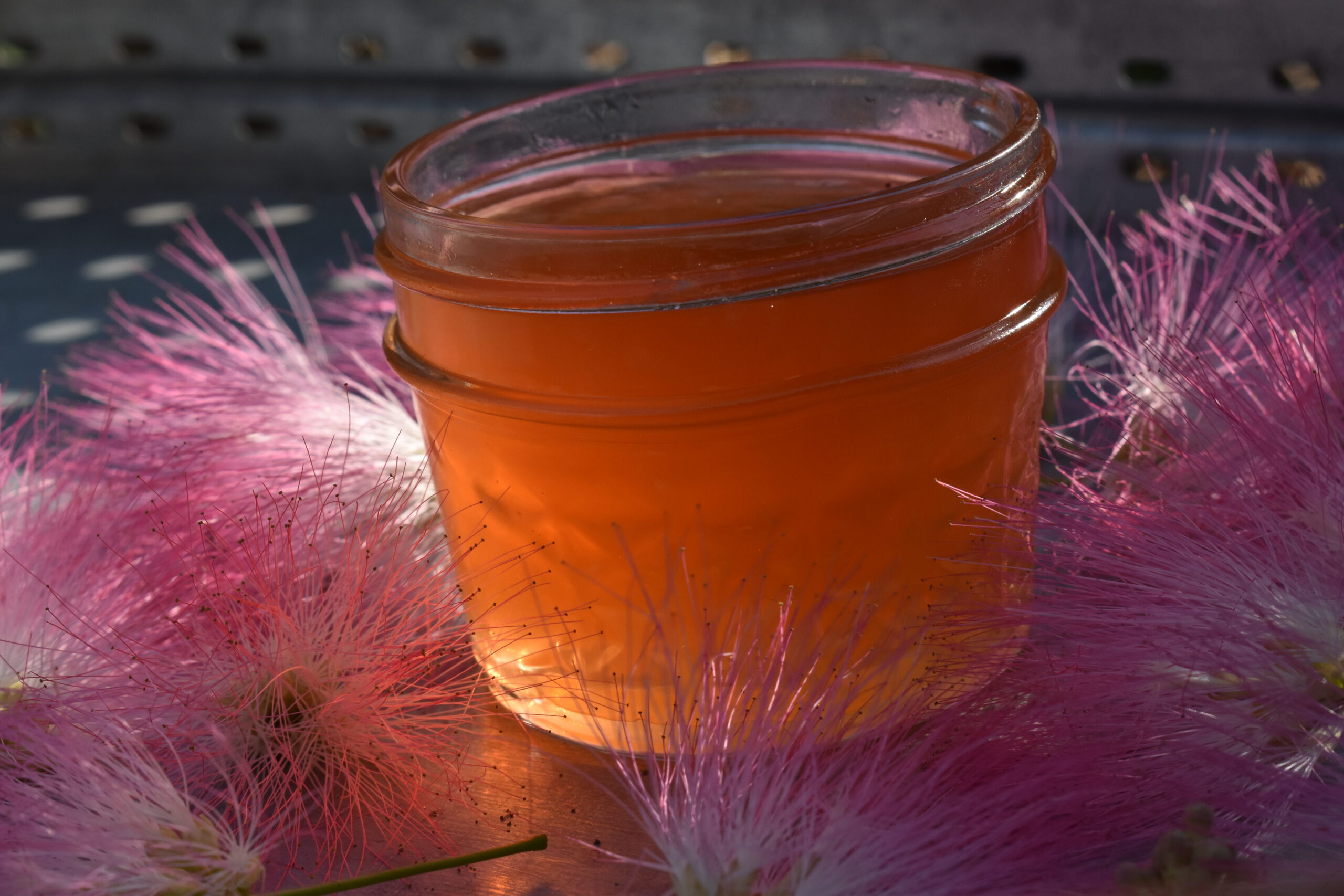

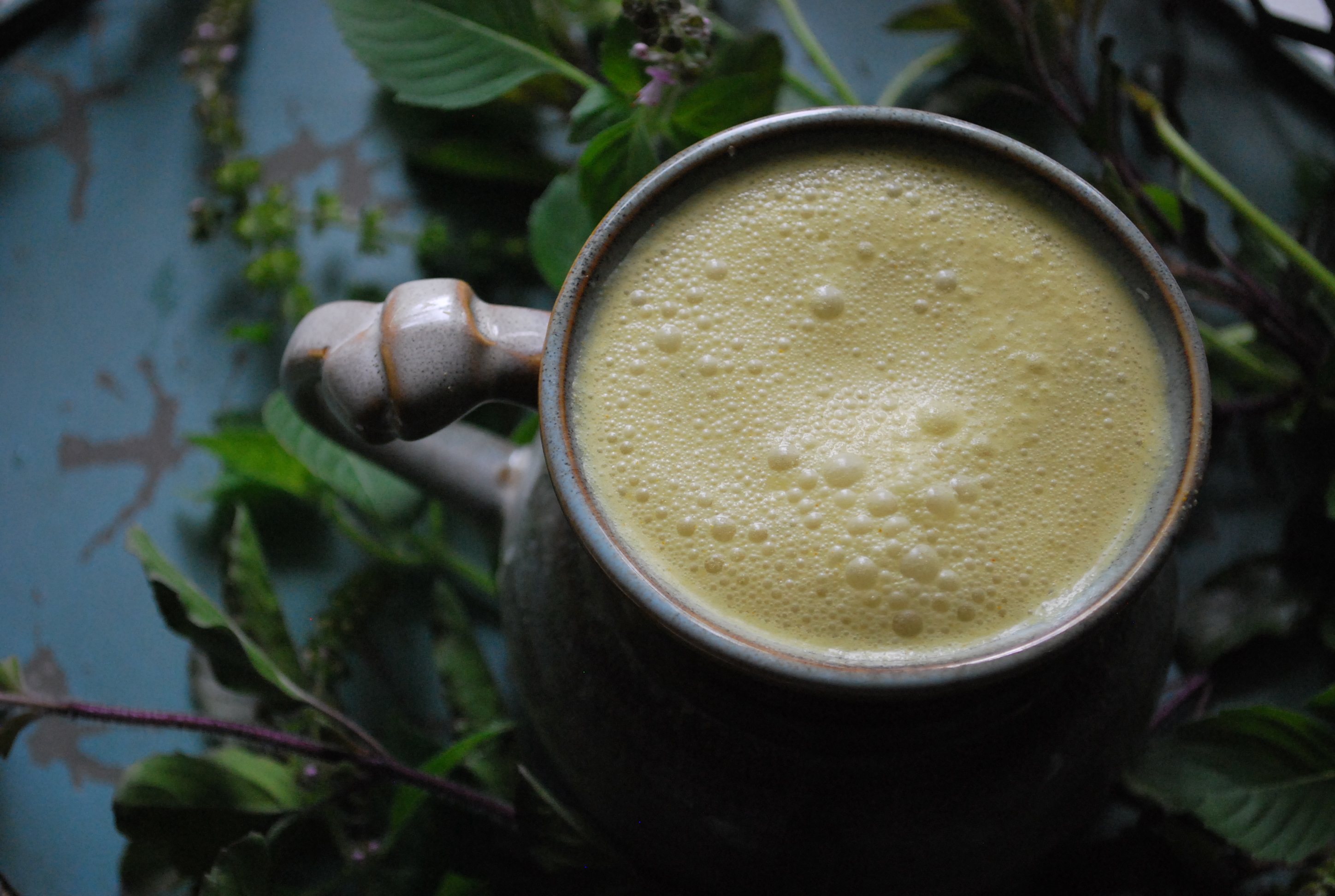
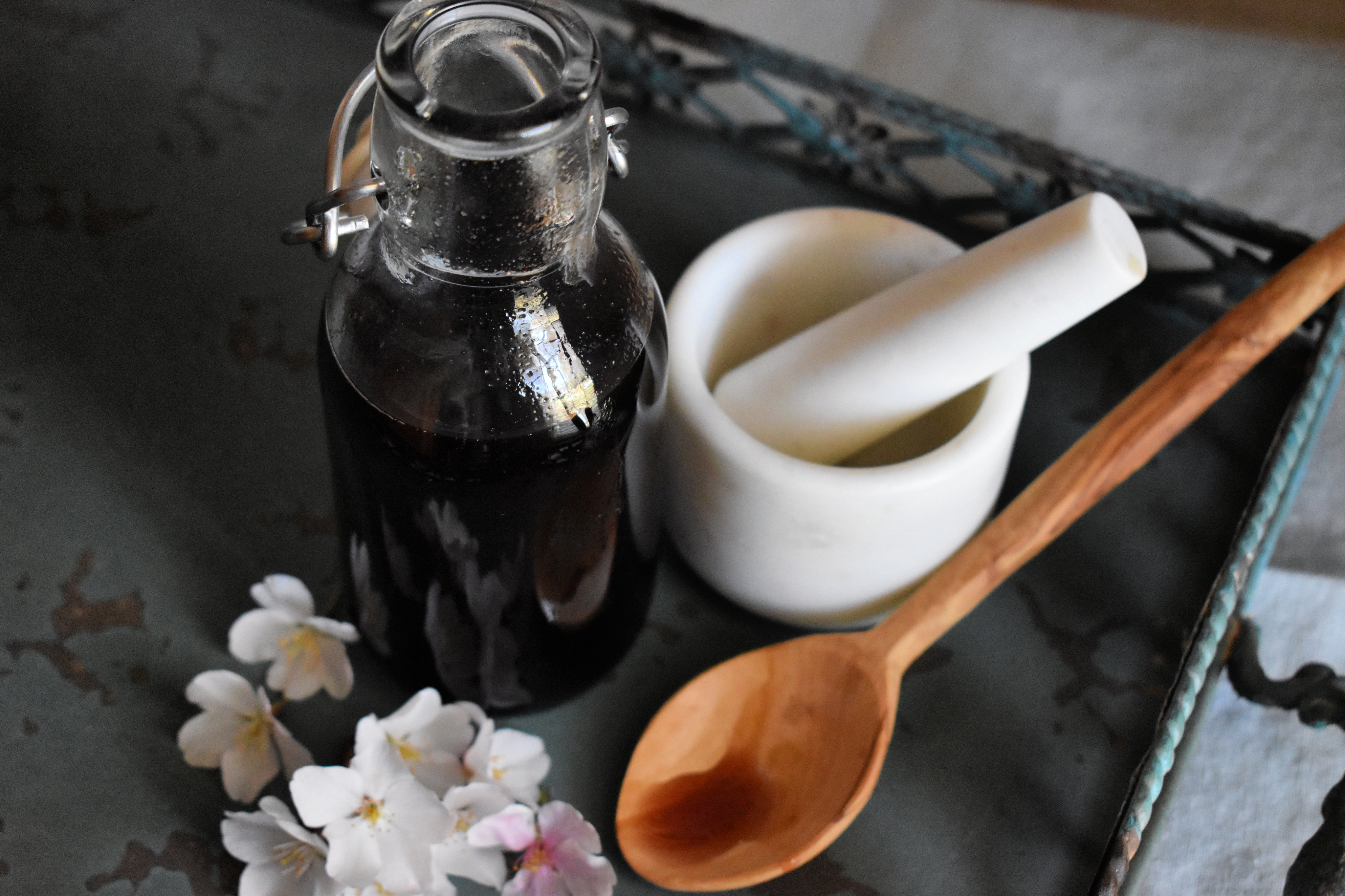
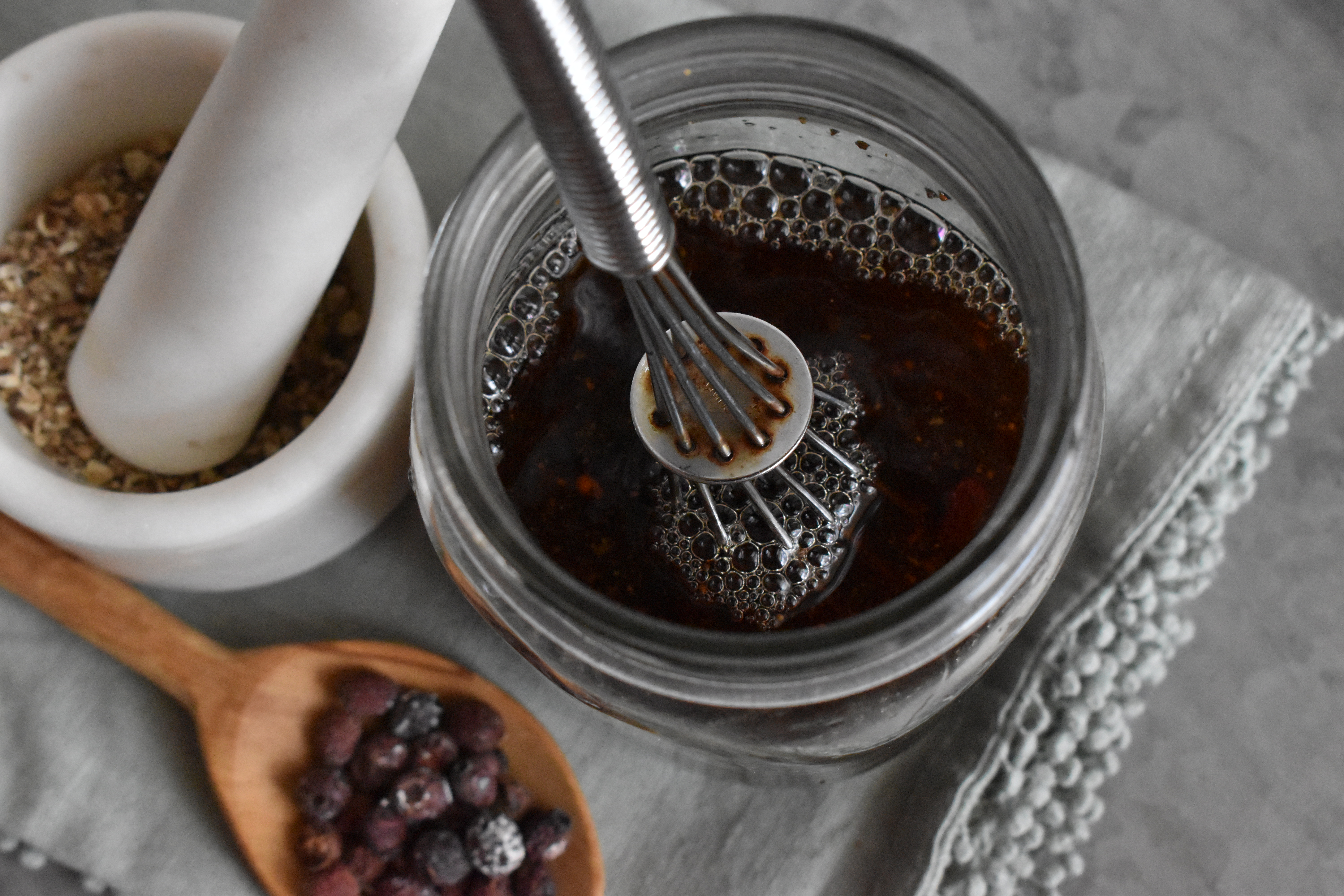
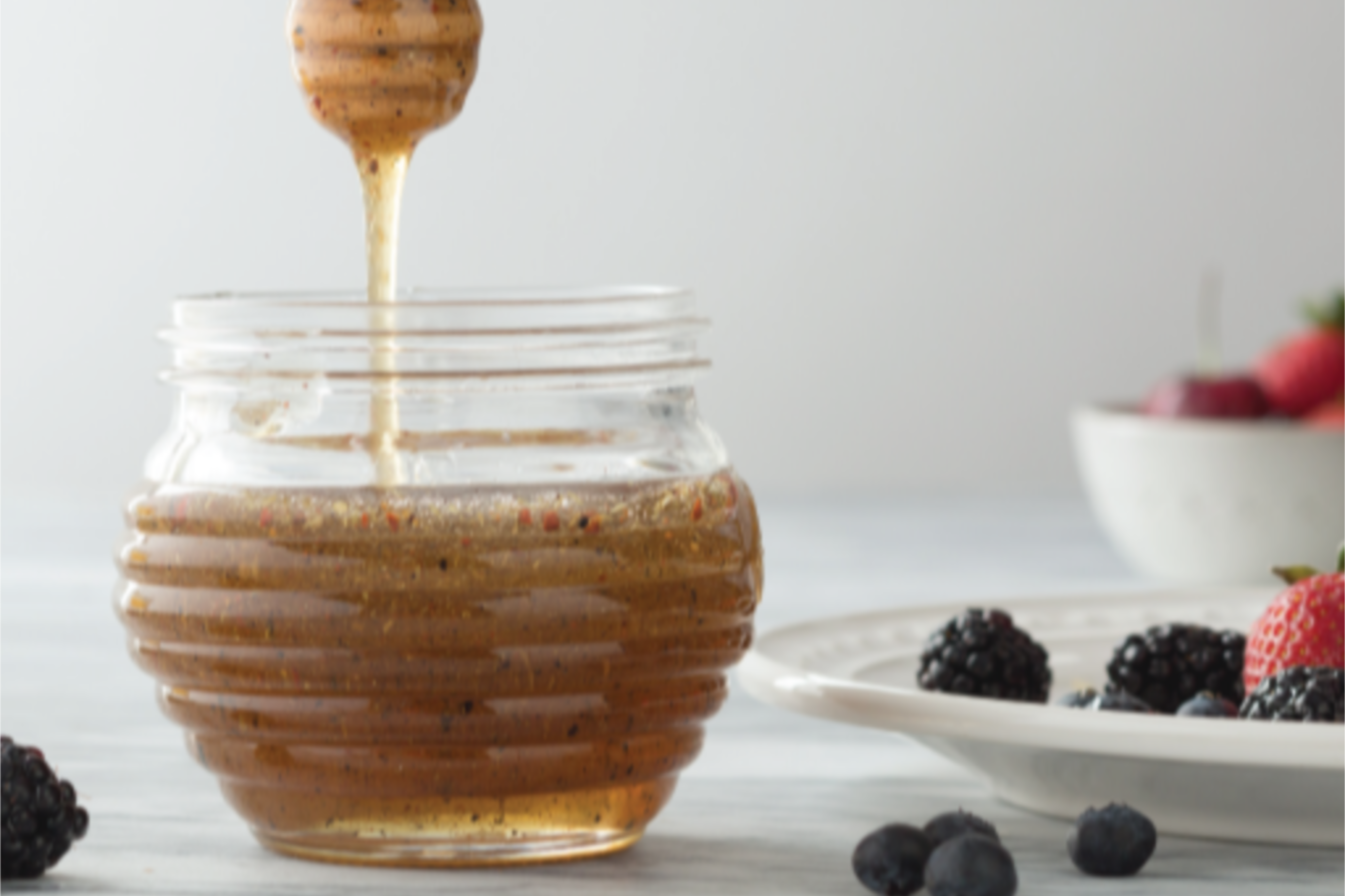
[…] Mimosa Flower Jelly Recipe […]
[…] flowers? You might enjoy this violet flower oxymel recipe! I also have a recipe for this beautiful mimosa flower jelly on our sister website, Teacup […]